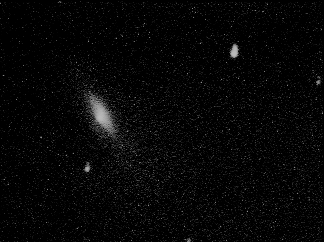
Updated 19 June 2000
This page contains various images I (Joe Roberts) have managed to obtain using a Meade Pictor 216XT CCD Camera. I am new at CCD imaging, I've only used the camera about half a dozen times as of June 1999. Many of these images are "quick and dirty"... at this time I am still learning how to use the CCD unit and in the process of experimenting. This page is very minimal at this time, I just wanted to get something up and on line so I can share images with others. More detail will be added in the reasonably near future. For more info on my CCD activies visit the CCD Imaging page.
The Meade Pictor 216XT is what I consider an "entry level" CCD camera; despite this, the unit is capable of some remarkable images.
As mentioned, I am new at CCD imaging, so all of my imaging has thus far been relatively simple. All images that appear below are short exposures (up to a few minutes at most) using a Celestron CG-11 telescope operating at F6.3. What impresses me the most is the remarkable detail that the 216XT records with such short exposures!

Galaxy NGC 3193 in Leo, 1 minute exposure

Edge-On Galaxy NGC 4565 in Coma Berenices, one minute exposure (taken with a full Moon in the sky!)
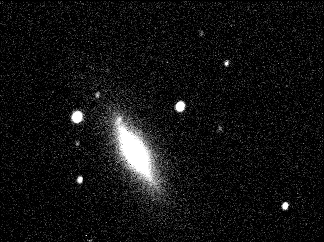
Galaxy NGC 5866, one minute exposure
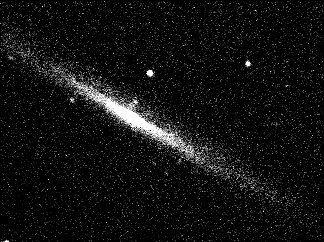
Edge-On Galaxy NGC 5907 in Draco, one minute exposure
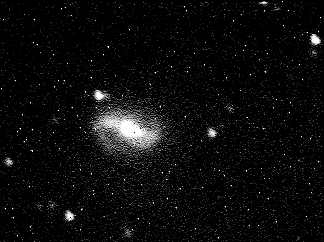
Galaxy NGC 6217, one minute exposure
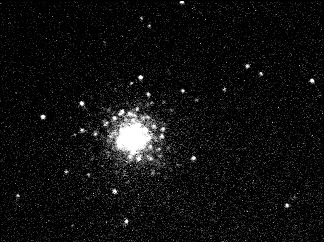
Globular Cluster NGC 6229 in Hercules, one minute exposure
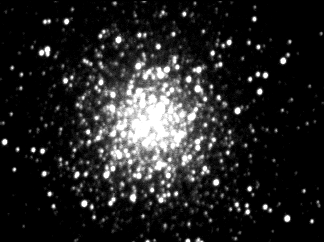
M13 in Hercules, one minute exposure
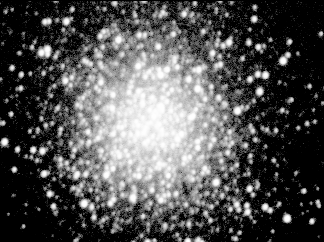
M13 in Hercules (same image as above but with different image processing)
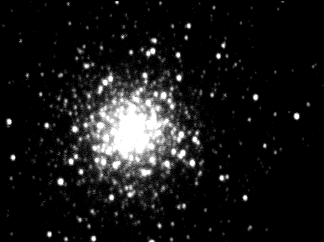
Globular Cluster M3 in Canes Venatici, one minute exposure
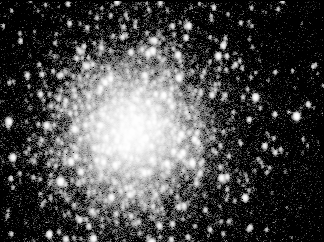
M3 in Canes Venatici (same image as above but with different processing)
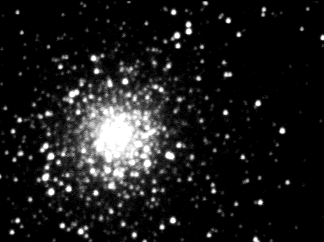
Globular Cluster M5 in Serpens Caput, one minute exposure
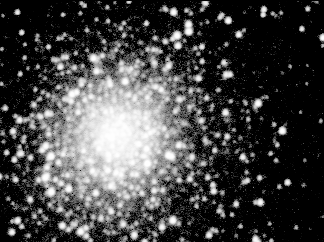
M5 in Serpens Caput (same image as above but with different processing)
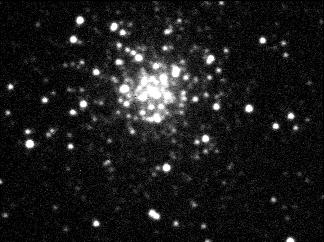
Globular Cluster M56 in Lyra, one minute exposure
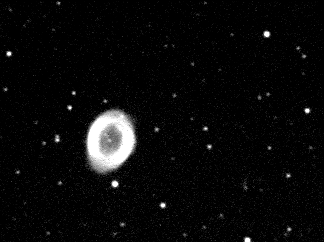
M57 (Ring Nebula) in Lyra

Galaxy M63 in Canes Venatici (taken with a full Moon in the sky!)
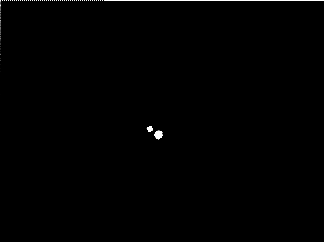
Double Star Mizar in Ursa Major, very short exposure (10 msec?)

Galaxy M82 in Ursa major, 30 second exposure! (10 June 1999)

Open Cluster M11 in Scutum, 30 second exposure (10 June 1999)

Galaxy M106 in Ursa Major, one minute exposure (10 June 1999)

Galaxy M81 in Ursa Major, 30 second exposure (10 June 1999)
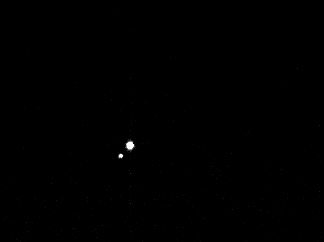
Double Star Alpha Canes Venatici, 10 msec exposure (10 June 1999)
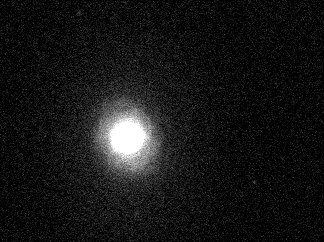
Galaxy M94 in Canes Venatici, 30 second exposure (10 June 1999)

Galaxy M109 in Ursa Major, 30 second exposure (10 June 1999)
The images below represent some of the newer ones I have taken in late May and June of 2000. I have not had nearly as much time as I would like to get out and do CCD imaging. I am getting somewhat better at imaging, although after looking at images others have taken with the ST-7 and ST-8, I have a long way to go. I generally am still having a difficult time with CCD imaging, it is a field with very demanding requirements. I have found out that my scope has some rather severe (as far as CCD requirements are concerned) periodic drive error. Mnay of the images I take are no ggod because of drifting stars (despite excellent polar alignment). I have noticed that this error appears to be confined to one section of the telescope's drive system, I am wondering if there is a bad area on the RA gear. This problem forces me to keep exposures down to around 30 seconds.. not a good situation. Also, I found that the Meade F3.3 focal reducer I purchased was of no real use. It cannot be used with a flip mirror attachment (not conveniently anyway), and without a flip mirror I refuse to do CCD work with the 216XT (placing objects on the CCD is far, far too difficult). And, as it turns out, with the Celestron F6.3 reducer in front of the flip mirror unit, the effective focal ratio is F5, not horribly different than the F3.3 that the other reducer yields. So, for now I am sticking to the F5 configuration. I am beginning to contemplate the purchase of either an ST-7 or ST-8, perhaps next year if funds allow. From all I have read on the web, the ST-7 and ST-8 appear to be the clear winners between SBIG and Meade. I will also say that the latest version of the Meade Pictor software is quite a it more stable than the older version that came with my unit. With the older version, the software crashed several time per night, often resulting in lost images.
|
|
NGC 2276 This is a 2.5 minute exposure of the far northern galaxy NGC 2276. I was able to use a 2.5 minute exposure with little tracking error because the galaxy is so close to the northern pole. Taken 27 May 2000. |
|
|
NGC 4490 (Galaxy in Canes Venatici). This image is a composite of four 30 second exposures. I have found that galaxies are tough targets for the 216XT, mainly because of noise. Single exposures do not generally provide a satisfactory image; several images must be taken and combined in the processing. Taken 27 May 2000. |
|
|
NGC 6791 (Open Cluster in Lyra). NGC 6791 looks better visually in my opinion, primarily because it cannot fit into the 216XT field of view using the CG-11 scope. Taken 27 May 2000. |
|
|
Lagoon Nebula This is a single 30 second exposure of the central region of the Lagoon Nebula. Note that the nebula is far too large to fit into the field of view. Also note that the image is not grainy (compared to others); this is because the nebula is so bright that signal to noise ratio is not a major problem. The bright star at the center of the nebula is considerably bloomed also. Taken 27 May 2000. |
|
|
M13 (Globular Cluster in Hercules). This image is a composite of two 30 second images of M13. Taken 27 May 2000. |
|
|
M16 (Open Cluster and Nebula in Serpens). This is a single 30 second image of M16. I did not have time to take more images as the sky was starting to get bright due to oncoming dawn. Nevertheless, the "pillars" are visible. I suspect that this image could be cleaned up considerably by stacking additional images. Taken 27 May 2000. |
|
|
M17 (Nebula in Serpens). This is a single 30 second exposure of M17. Note that the grain is relatively fine, due to the great brightness of this nebula. Unfortunately, M17 is too large to fit comfortably within the 216XT field of view when used at F5 on the CG-11 scope. Taken 27 May 2000. |
|
|
M22 (Globular Cluster in Sagittarius). This is a single 30 second image of the large and bright cluster M22. Multiple exposures are not needed to get a decent image (however multiple images would result in an improved image). Taken 27 May 2000. |
|
|
M27 (Planetary Nebula in Vulpecula). This image is the result of four 30 second exposures of M27 (images were averaged in processing). Although M27 is quite bright, it does not image as well as one might think because the CCD in the 216XT is relatively insensitive at the wavelength of light predominant in M27. As a result, multiple exposures are needed to produce a satisfactory image. This image, while satisfactory, could stand to be cleaned up with additional exposures. Taken 27 May 2000. |
|
|
M4 (Globular Cluster in Scorpius). This image is the result of four 30 second exposures of M4. This cluster is said to be one of the easier globular clusters to resolve in the telescope, being rather spread out compared to M13 for example. Note the line of stars that horizontally divide this cluster. Taken 27 May 2000. |
|
|
M56 (Globular Cluster in Lyra). This image is the result of four 30 second exposures of M56. This globular is one of the smaller ones (as seen from our vantage point) that Messier spotted; compare it to M22 and M13 for example. Taken 27 May 2000. |
|
|
M57 (Planetary Nebula in Lyra). This is a single 30 second exposure of the famous "Ring Nebula". This is not my best image of this object, but it is "satisfactory" for now (ten years ago I would have been thrilled to obtain an image of this quality!). Taken 27 May 2000. |
|
|
M71 (Cluster in Sagitta). This image is the result of two 30 second exposures of M71. M71 is often debated as to being a "loose" globular cluster or a "rich" open cluster. This image shows that it is clearly richer and more condensed than many open clusters, but it is not as rich as some of the typical globular clusters. Taken 27 May 2000. |
|
|
M80 (Globular Cluster in Scorpius). This is a single 30 second exposure of M80. Not a bad image, although it could benefit from the noise reduction that additional exposures would bring. Taken 27 May 2000. |
|
|
Trifid Nebula (Nebula in Sagittarius). This image is the result of four 30 second exposures of the central area of the Trifid Nebula. It is easy to see impact of noise reduction in this exposure: look at the left and top edge of the image. This is where the images had to be adjusted in processing due to "drift" between the exposures. The grainy areas are where the images do not overlap, and the benefit of "noise averaging" did not occur. Note also the bloom of the bright star at the center of the nebula! This (bloom) would mean that long exposures of the Trifid would not be possible. To get a really noise free image would require that many short exposures be averaged. Taken 27 May 2000. |
|
|
M10 (Globular Cluster in Ophiuchus). This image is the result of four 15 second exposures of M10. The conditions when these images were taken were not good at all; high clouds were moving through the region. Despite the bad conditions, a reasonable image resulted. Taken 30 May 2000. |
|
|
NGC 5897 (Globular Cluster in Libra). This image was made from three 30 second exposures. Conditions at the low declination of this object were marginal at best. Taken 3 June 2000. |
|
|
NGC 6712 (Globular Cluster in Scutum). This image is a composite of three 30 second images. Taken 3 June 2000. |
|
|
NGC 6781 (Planetary Nebula in Aquila). This image is the result of six 30 second exposures. This planetary is one of my favorites, it looks like a soap bubble (visually) in the 11" Celestron. The individual images that make up this composite are quite grainy (noisy); the faint object benefited greatly from stacking images. Despite the improvement, some grain is still obvious. Taken 3 June 2000. |
|
|
NGC 6934 (Globular Cluster in Delphinus). This image is the result of three 30 second images. Resolution is obvious, but this cluster is not nearly as nice as M13 for example. Taken 3 June 2000. |
|
|
M11 (Open Cluster in Scutum). This is a single 30 second exposure of the famous and very rich cluster M11. This image is not quite centered, but is OK otherwise. Taken 3 June 2000. |
|
|
M14 (Globular Cluster in Ophiuchus). This image is the result of three 30 second exposures of M14. This is one of my better images to date. Taken 3 June 2000. |
|
|
M16 (Nebula and Cluster in Serpens). This image is the result of three 30 second exposures of M16. The impact of noise reduction (achieved by stacking images) can be seen by comparing this image to the single frame image elsewhere on this page). The dark area at the left edge of the image is the result of stacking frames that are not exactly the same. Note the bloom on the bright stars. Taken 3 June 2000. |
|
|
M17 (Nebula in Serpens). This image is the result of two 30 second exposures of M17. Note the noise reduction that resulted from stacking the two images as compared to the single frame image elsewhere on this page. Taken 3 June 2000. |
|
|
M22 (Globular Cluster in Sagittarius). This image is the result of three 30 second exposures of M22. Taken 3 June 2000. |
|
|
M5 (Globular Cluster in Serpens Caput). This is a single 30 second exposure of M13, one of the first I took during my CCD session of 3 June 2000. |
|
|
Beta Cygnus at F10 (Double Star in Cygnus). This is a single 10 millisecond exposure of beta Cygnus. This image was taken with no focal reducer in the path, yielding a "stock" F10. This image illustrates just how small the field of view of the 216XT is on the CG-11 scope!. Taken 30 May 2000. |
|
|
Beta Cygnus at F5 (Double Star in Cygnus). This is a single 10 millisecond exposure of beta Cygnus. This image was taken with the Celstron F6.3 focal reducer in the path (in front of the Meade model 247 Flip Mirror unit). In this configuration, the actual focal ratio at the CCD is about F5 (not F6.3). Compare this image to the one directly above for scale. The field of view is still small! Taken 30 May 2000. |
|
|
Epsilon Lyra at F5 (Double Star in Lyra). This is a single 10 millisecond exposure of Epsilon Lyra. This image was taken with the Celstron F6.3 reducer as described just above (yielding an actual F5). Note that the "double doubles" cannot be seen in this image, although a careful inspection shows that the two stars shown are elongated in the proper directions (in other words, the stars are trying to resolve!). Taken 30 May 2000. |